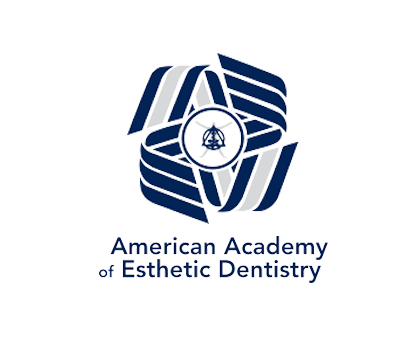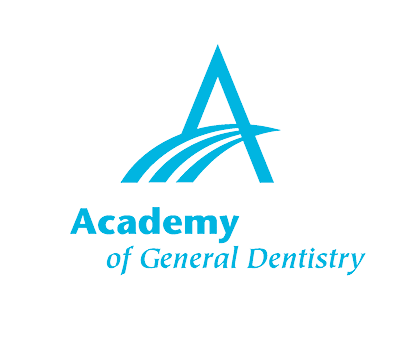Dental anxiety is a common hurdle for many individuals, often leading to delayed or avoided dental appointments. This anxiety not only affects oral health but can also contribute to overall stress. Fortunately, advancements in dentistry have introduced comforting solutions like sleep dentistry. In this comprehensive guide, we'll explore the intricacies of sleep dentistry, address common concerns, and illustrate how our dental practice offers a safe and reassuring environment for your dental care.
How Does Sleep Dentistry Work?
Sleep dentistry, also referred to as sedation dentistry, stands as a transformative approach in dental care, particularly for those grappling with dental anxiety or phobia. This innovative technique employs sedative drugs to induce a state of relaxation and ease, significantly reducing stress and discomfort during dental procedures. The core idea is to make dental visits a less daunting experience, encouraging regular dental care and thereby promoting better oral health.
The Role of Sedative Drugs in Sleep Dentistry
The utilization of sedatives in sleep dentistry is meticulously tailored to each patient's needs and the specifics of the dental procedure. These sedatives are carefully selected and administered under strict guidelines to ensure maximum safety and effectiveness. The goal is not just to alleviate anxiety but also to make the dental experience as comfortable and pain-free as possible.
Types of Sedation Used in Sleep Dentistry
- Oral Sedatives: These medications, typically in pill form, are taken orally about an hour before the dental procedure. They are ideal for patients with mild to moderate anxiety, helping them achieve a relaxed state by the time they sit in the dental chair. The dosage and type of oral sedative are chosen based on the patient's anxiety level and overall health.
- Inhalation Sedation: Commonly known as laughing gas, this method involves inhaling a blend of nitrous oxide and oxygen through a mask. The gas has a quick onset, producing a calming effect within minutes. One of the key benefits of inhalation sedation is the rapid recovery time, allowing patients to drive themselves home after the procedure.
- IV Sedation: This involves administering sedative drugs directly into the bloodstream through an intravenous line. IV sedation offers a deeper level of sedation compared to oral and inhalation methods, making it suitable for more extensive dental procedures or for patients with severe dental anxiety. The dentist can fine-tune the sedation level, ensuring the patient remains comfortable throughout the procedure.
- General Anesthesia: Employed in complex or lengthy dental procedures, general anesthesia renders the patient completely unconscious. This form of sedation is typically reserved for surgical procedures or for patients who cannot be adequately managed with other sedation methods. It requires the presence of a qualified anesthesiologist or a dentist with specialized training in anesthesia.
Patient Experience During Sleep Dentistry
The experience of undergoing sleep dentistry can vary depending on the type and level of sedation used. In general, patients report feeling deeply relaxed, with many having little to no recollection of the procedure. This amnesic effect is particularly beneficial for those with severe dental anxiety, as it helps alleviate the fear associated with dental visits.
- With Oral Sedatives and Nitrous Oxide: Patients remain conscious but in a significantly relaxed state. They are usually able to respond to verbal commands and maintain their protective reflexes.
- With IV Sedation and General Anesthesia: Patients are either in a deep sedative state or completely unconscious, with no awareness of the procedure. In these cases, continuous monitoring of vital signs is essential to ensure patient safety.
Post-Procedure Recovery
The recovery period and post-procedure care vary based on the type of sedation used. For lighter sedation methods like oral sedatives and nitrous oxide, patients can often resume normal activities shortly after the procedure. However, for IV sedation and general anesthesia, a longer recovery time is needed, and patients are advised to have someone accompany them home.
What Dentist Will Put You to Sleep?
When it comes to sleep dentistry, the choice of a dental professional is paramount. Not all dentists are qualified or experienced in administering sedation. It is crucial to seek care from a dental practice where the staff, including dentists and anesthesiologists, have specialized training and experience in sleep dentistry. Our dental office is proud to have a team of professionals who not only have the requisite qualifications but also a deep understanding of the nuances involved in sedation dentistry. They are adept in handling various sedation techniques, ensuring both safety and comfort for the patient.
Expertise in Sedation Dentistry
Our team includes dentists who have undergone extensive training in sedation techniques and anesthesiologists specialized in dental procedures. This dual expertise ensures that every aspect of the sedation process is managed with the utmost care. The sedation methods we employ are aligned with the latest advancements in dental care, and our staff stays up-to-date with ongoing education and training in sedation dentistry.
The Importance of Personalized Care
We recognize that every patient is unique, with different levels of anxiety and varying medical histories. Our approach is highly personalized. During the initial consultation, our team spends time understanding the specific needs and concerns of each patient. This personalized care extends throughout the entire treatment process, from the initial consultation to the follow-up after the procedure.
Consultation and Assessment
Prior to administering any form of sedation, our office conducts an in-depth consultation. This session is a critical step in ensuring the safety and effectiveness of sleep dentistry. During this consultation, our team reviews the patient's medical history in detail, discussing any existing medical conditions, medications, and previous experiences with anesthesia. Understanding the patient's medical history helps us to identify any potential risks or contraindications for sedation.
Additionally, we assess the patient's level of dental anxiety. This assessment is not just about determining the level of fear but also about understanding the patient's overall comfort with dental procedures. It helps us tailor the sedation to the individual's anxiety level and the nature of the dental work to be performed.
Tailoring Sedation to Individual Needs
The final decision on the type of sedation is made after carefully considering all these factors. Our goal is to choose a sedation method that provides the maximum comfort with the least risk. Whether it's a mild sedative for a routine cleaning or more profound sedation for complex procedures, our team ensures that the chosen method is perfectly suited to the patient's needs.
Ensuring a Safe and Comfortable Experience
Safety is our top priority. We ensure that every sedation procedure is conducted with the highest safety standards. Our dental practice is equipped with advanced monitoring equipment to closely observe the patient's vital signs during the procedure. Our staff is trained to respond swiftly to any changes, ensuring a safe and comfortable experience for the patient.
Choosing the right dental professional for sleep dentistry is a critical step towards a positive and anxiety-free dental experience. At our dental office, we combine expertise, personalized care, and the highest safety standards to ensure that each patient receives the best possible care in their journey towards better oral health.
Is Sedation Dentistry Dangerous?
While sedation dentistry is generally safe when administered by experienced professionals, it is important to understand the precautions and safety measures involved.
- Pre-Procedure Assessment: Comprehensive evaluation of the patient's health and medical history to identify any potential risks.
- Monitoring During Procedure: Continuous monitoring of the patient's vital signs is essential to ensure their safety throughout the procedure.
- Post-Procedure Care: Patients are given specific instructions for aftercare, especially if they have undergone heavy sedation or general anesthesia.
Risks and How We Mitigate Them
Like any medical procedure, there are inherent risks associated with sedation dentistry, such as allergic reactions or variations in how individuals respond to sedatives. At our dental practice, we mitigate these risks by:
- Utilizing state-of-the-art monitoring equipment
- Having a well-trained team prepared for emergency situations
- Conducting thorough pre-procedure screenings
Conclusion
Overcoming dental anxiety is pivotal for maintaining oral health. Sleep dentistry offers a comforting solution, allowing patients to receive dental care in a stress-free environment. Our dental practice is dedicated to providing a safe, professional, and reassuring experience. If you've been postponing dental visits due to anxiety, we invite you to schedule a consultation with us. Let us guide you towards a healthier smile in the most comfortable way possible.










